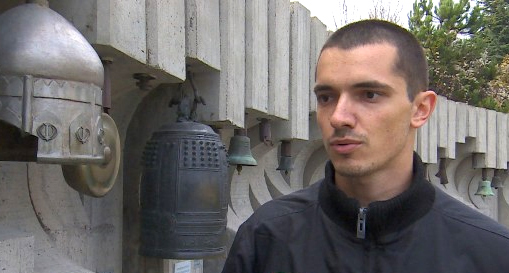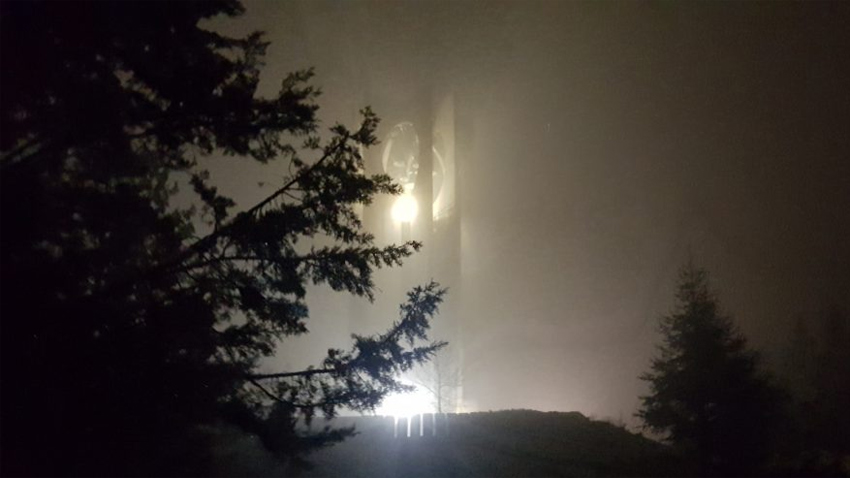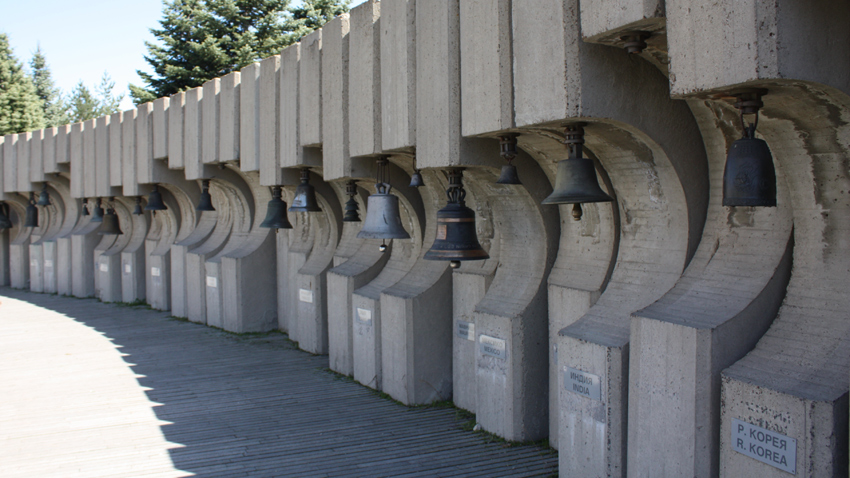There is no other country that owns a huge percussion instrument on which musical works could be performed through the synchronized sound of bells. Nearly 40 years ago, a massive monument was built in the outskirts of Sofia, where a total of 107 different bells from all around the world were assembled on concrete benches. Among them, the oldest one is a bell from XI century, as well as a copy of a bell from the 4th century BC. The project was part of the large-scale initiative of Socialist Bulgaria back then for holding an International Children's Assembly with the participation of delegations from all over the world. The beginning was in 1979, when delegations from 75 countries arrived in Sofia and each brought a bell as a symbol of their homelands.
The children's forum "Flag of Peace" was held once every three years, and in 1989 children from 135 countries came to this country and the number of bells was growing.
That is how the Bells Monument (or “Kambanite”) was created. Although very popular in the past, for many years it has been standing neglected and forgotten. Today Sofia has been rapidly developing with the participation of many young and active people who do not know much about the communist ideology of the years before 1989. Some of them want to focus on the monument as a symbol of peace and understanding. "Currently, many citizens of Sofia do not even know that there is such a monument and that is why we need to talk more about it," says Hristo Iliev, co-organizer of "Share the Bells" initiative, which has many supporters. Last year, the association invested 5 500 euros, received under a municipality program for a project to renovate the area around "Kambanite." They have cleaned part of the concrete structure and lighting was placed in the high part of the monument, as well as information boards. "We want to bring back the old splendor of this monument of culture," Hristo Iliev says. According to him, in addition to the unique view of the bells on the backdrop of Vitosha Mountain, the whole park (with an area of 380 decares) was a very pleasant place for a walk in the summer. More from Hristo Iliev:
Today Sofia has been rapidly developing with the participation of many young and active people who do not know much about the communist ideology of the years before 1989. Some of them want to focus on the monument as a symbol of peace and understanding. "Currently, many citizens of Sofia do not even know that there is such a monument and that is why we need to talk more about it," says Hristo Iliev, co-organizer of "Share the Bells" initiative, which has many supporters. Last year, the association invested 5 500 euros, received under a municipality program for a project to renovate the area around "Kambanite." They have cleaned part of the concrete structure and lighting was placed in the high part of the monument, as well as information boards. "We want to bring back the old splendor of this monument of culture," Hristo Iliev says. According to him, in addition to the unique view of the bells on the backdrop of Vitosha Mountain, the whole park (with an area of 380 decares) was a very pleasant place for a walk in the summer. More from Hristo Iliev:

“I am 29 years old and I have no memories of that time, but I am very curious when some people ask us why we use municipal money to renovate a monument from the times of communism. In our opinion, this is not a monument to one party or another, as there is no such symbolism in it. On the contrary, the "Bells" were quite unconventional and not in line with the established ideology back then. This monument is not typical of socialist art, and in my opinion it has nothing to do with the overall spirit of that time. When a monument was removed from the space surrounding the National Palace of Culture, some people told us that the next monument to be demolished next will be the "Bells". This puzzled me. The two monuments have little to do with each other, and the one in front of the National Palace of Culture had begun to sink as soon as its construction was completed. “Kambanite” were made in much better way and represent a higher form of the monumental art of that time. When we shot them from above, we received some impressive footage. The place is very nice and this year we have offered to take some of the guests who came to Sofia for the Bulgarian Presidency of the Council of the EU to see it. The monument is a unique place for all of Europe and nowhere else there are so many bells that could sound like an independent musical instrument."
On their website "#Share the Bells" the young people of the association gathered some interesting facts about the International Children's Assembly held in Sofia under the motto "Unity, Creativity, Beauty" during communism. In 1979 Bulgaria wanted to leave behind Cold War tension and present to the international community an image of a tolerant country that was open to the world. Now, 40 years later, the idea of a children's assembly in Sofia is still alive and enjoys the support of a number of young people.

“Now we will try through our efforts and with the support of citizens and the Sofia Municipality to organize this assembly again, not with the idea of reviving communism, but in order to organize a meeting of children from all over the world, so they can get to know each other better and present the culture of their countries to others. Interestingly, the assembly became so popular in the 1980s that the Bulgarian state decided to make it a regular event that was to be held every three years. Let's see if next year, for its 40th anniversary, we would be able to organize such a large scale event again, so whoever wants to help and have ideas could contact us," Hristo Iliev told Radio Bulgaria.
English: Alexander Markov
Prayer served by His Holiness Bulgarian Patriarch Daniil on February 22, marks the beginning of the celebrations for the consecration of the new church "St. John of Rila" of the Bulgarian Orthodox community in London. For the..
"Thracians, Wine and Culture" is the theme of a seminar at the archaeological complex "Valley of the Thracian Kings" near Kazanlak , which brings together scholars and researchers from all over Bulgaria on February 22. This is the ninth edition of..
Help me do it myself, get me in touch with nature, take care of my immunity – these are the principles that the teachers at the Bulgarian kindergarten "Hristo Botev" in the Slovak capital Bratislava follow. The kindergarten has been operating since 2009..
Exactly 3 years ago, on February 24, Russia’s invasion of Ukraine began – an event that woke up Europe 77 years after the end of World War II and called..

+359 2 9336 661
